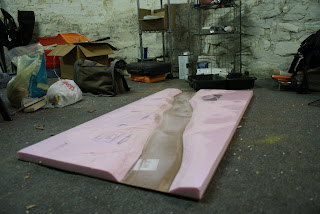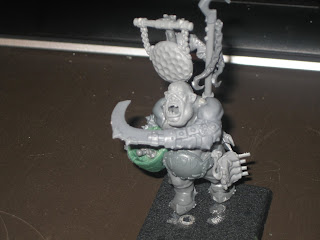So my first detailed Flames of War terrain installment will be hay bales for my eastern front farms. These are fairly simple, using only 2 materials with the exception of the sand, paint, and flocking material used to make it match your gaming table.
First I started with some simple arts and crafts clay I bought at AC Moore for about $6. Its simple non-toxic stuff, but needs to be stored in a zip-lock bag to keep from drying out.
I took a small amount of the clay and formed it into a ball slightly smaller than a golf ball. I then affixed it to a piece of tin foil, and slowly moulded it into a rough bullet shape. The tin foil could also be paper, wax paper, cardboard, or whatever else you have at hand. It serves two purposes, (1) keeps the bail from sticking to the surface you are working on and (2) allows you to easily rotate the lump of clay.
I then took a simple scuplting tool I made from a length of dowel. I just cut the end of the dowel at an angle and sanded both sides until I had a blade-like shape.
Starting radially from the top of the clay, I used the sculpting tool to create hash marks to represent the individual pieces of hay.
After I had done a complete circle, I turned the tool sideways and made an indent into the clay just at the bottom edge of the previously made hash-marks. This is to give the impression that each higher layer of hay overlaps the layer below it.
I then repeat the above two steps several times, working my way down the clay, until I reach the base. Once I got in the groove of things, it took about 5 minutes to do each bale. Like when working with green stuff, it helps to wet your tools occasionally to keep them from sticking.
About nine hay bales later, adding some irregularly-shaped cut and bevelled pieces of MDF, and voila! Hay bales for your friendly neighborhood Russian farm. Just wait 24 hours or so for them to fully dry (they are a fairly solid lump of clay, so can take a while to dry), add sand, paint, flock, and you're done.















































